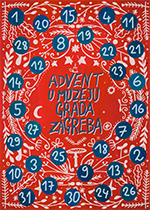In the Middle Ages Zagreb was the scene of clashes between the two rival cities, Kaptol and Gradec, caused mainly by disputes over finances and ownership: the collection of toll and tithe, market tax, land ownership and the right to use the mills on the Cirkvenik, the boundary between the two entities.
In Gradec, penalties were meted out according to the provisions of the Golden Bull. The magistrate had the ‘right of the sword’ (ius gladii), i.e. he could pronounce the death sentence. Like in the rest of Europe, there were other harsh and cruel penalties: imprisonment, loss of civil rights, banishment and variuos extreme forms of corporal punishment, such as the cutting off of the ears, arms or legs, branding with a hot iron, etc. Less severe penalties included the wearing of a shame mask or the pillory. It was an age of superstition, belief in black magic, demons and witchcraft. Witch-hunting was especially vehement in the 17th century. The municipal court, prompted by the clergy, was keen to investigate and prosecute suspects. Over a period of 400 years, more than 140 witches were convicted, but the execution of the sentence was stayed in most cases. Witches were burnt at the stake at a place called središče in present-day Tuškanac Park.
The death penalty for witchcraft was abolished by Maria Theresa in 1756.
Nada Premrl

